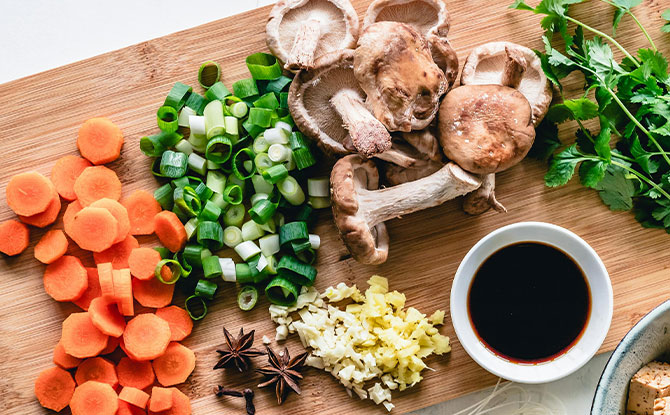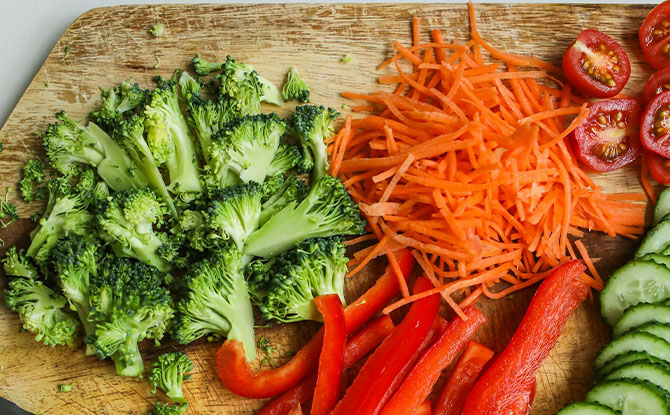Making homemade vegetable stock is a big win for any cook. It’s great for adding depth to soups or enhancing other dishes. This recipe is easy and uses healthy, fresh ingredients.
By using vegetables and kitchen scraps, you get a stock that’s full of nutrients. It’s better than store-bought options because it’s free from preservatives. Enjoy making your own delicious soup bases with this simple recipe.
Introduction to Homemade Vegetable Stock

Making homemade vegetable stock is a key skill for home cooks. It offers rich, customizable flavors for many dishes. Unlike store-bought stocks, homemade versions have no preservatives or additives, making them healthier.
The nutritional benefits of homemade vegetable stock are huge. It’s full of vitamins and minerals from fresh veggies, making your meals healthier. Using quality ingredients means your stock is both nutritious and tasty. Plus, it’s a great way to use up leftover veggies, which is good for the planet.
Learning the vegetable stock basics can change how you make soups and risotto. You’ll need a mix of mirepoix — carrots, celery, and onions — and other veggies you like. Adding herbs and spices boosts the flavor. Cooking at home lets you control every ingredient, making your stock uniquely yours.
Benefits of Making Your Own Vegetable Stock
Making your own vegetable stock has many health benefits. It lets you control the sodium and avoid additives found in store-bought stocks. This results in a better taste and quality, perfect for those who care about their health.
It’s also cost-effective. You can use leftovers and vegetable scraps to make a delicious stock. This way, you save money and reduce food waste.
Homemade vegetable stock is great for all dietary preferences. You can make it vegan, vegetarian, or fit any diet by adjusting the ingredients. This flexibility ensures your stock meets your taste and dietary needs.
Lastly, making your own stock helps reduce food waste. It uses kitchen scraps and leftover veggies, promoting sustainable cooking. This approach not only saves food but also makes a nutritious base for your meals.
Ingredients You’ll Need

Making a tasty homemade vegetable stock starts with the right ingredients. Choose fresh vegetables for the best taste and nutrients. Carrots, celery, and onions are key. They create a flavorful base for your stock.
Using organic ingredients is a good idea. They support sustainable farming and keep your stock free from harmful chemicals. Garlic, leeks, and tomatoes are great organic choices.
Don’t forget to add bay leaves, thyme, and black peppercorns for depth. These herbs make your stock rich and savory. Fresh parsley and dill add a lovely herbal scent.
Feel free to add your own touches to the ingredients. Mushrooms bring a deep umami flavor, while parsnips add sweetness. With these ingredients, you’ll have a versatile and flavorful stock for your kitchen.
Step-by-Step Guide to Making Homemade Vegetable Stock
Making vegetable stock is a fun project that starts with picking your ingredients. First, gather vegetables like carrots, onions, celery, and garlic. Make sure to wash them well to get rid of dirt or pesticides.
Then, chop the vegetables into big chunks. Try to make them all the same size. This helps them cook evenly and release their flavors better.
Heat a big stockpot over medium heat and add a bit of olive oil. When the oil is hot, add the chopped veggies. Cook them for 5-7 minutes to add more flavor to your stock.
Once the veggies are browned, add enough cold water to cover them by two inches. Use cold water to avoid a cloudy stock. Bring it to a boil, then lower the heat to a simmer.
Let the stock simmer for at least an hour without a lid. Remove any foam that forms. This step makes your broth clear and clean-tasting. After an hour, taste and add salt and pepper if needed.
Strain the stock through a fine-mesh sieve into another pot or container. Throw away the solids. Your homemade vegetable stock is now ready to use or store for later.
This simple method makes a versatile stock that can improve your soups, stews, and more. Enjoy your homemade stock!
Best Practices for Using Homemade Vegetable Stock
Homemade vegetable stock is a versatile broth that can add depth and flavor to many dishes. Knowing how to use it can really improve your cooking. Here’s how to get the most out of your homemade vegetable stock:
Soups and stews are the classic uses for vegetable stock. It makes these dishes more flavorful and satisfying. For a quick flavor boost, swap homemade vegetable stock for water or store-bought stock in recipes. Your homemade stock will make everything from chicken noodle soup to beef stew taste better.
But vegetable stock can also be used in other ways. Try using it to cook grains like rice or quinoa. It adds nutrients and flavor. Also, deglaze pans with it after cooking vegetables or proteins for a savory layer in your dishes.
Homemade vegetable stock is great for sauces too. It can make a delicate reduction or a hearty gravy taste richer. It’s also perfect in risottos, blending well with other ingredients.
In short, using homemade vegetable stock in your cooking can open up many possibilities. It’s not just for soups and stews. It can also enhance grains and sauces, making your meals more flavorful and rich.
Zero Waste Tips: Making Stock with Kitchen Scraps

Start making a flavorful vegetable stock from your kitchen scraps. This not only helps reduce waste but also adds homemade flavor to your meals. Collect scraps like carrot tops, onion skins, and cabbage butts. These often-overlooked parts are full of nutrients.
Freezing your scraps is a great eco-friendly tip. Keep a container in your freezer for scraps. This way, you can save bits and pieces until you have enough for a big batch of stock. It makes sure no part of a vegetable is wasted.
Using kitchen scraps for stock is a simple way to reduce waste. It’s a smart way to be eco-friendly while making your food more delicious. Next time you chop veggies, remember that even small scraps can make a tasty broth. It’s all about sustainable cooking.
Customizing Your Vegetable Stock Recipe
Making your own vegetable stock at home lets you play with flavors. You can try out different recipes to find your favorite. Whether you like a strong broth or a light one, you can make it just right.
Don’t be afraid to mix vegetables based on what’s in season or what you have. Adding garlic, ginger, or herbs can give your stock a special taste. You can change how much you use to match your taste.
Also, you can make the stock fit your diet needs. Use leafy greens or root veggies for a healthy stock. For something different, try seaweed or spices for an Asian flavor.
Customizing your stock makes it truly yours. It’s a chance to try new things and find your own special flavors. Enjoy the journey of creating a stock that’s just right for you.
Storing and Freezing Your Homemade Vegetable Stock
Keeping your homemade vegetable stock fresh and flavorful is key. Once it cools, you can store it in the fridge or freezer. This way, you always have quality stock for cooking.
For quick storage, the fridge is a good choice. Cool the stock and put it in airtight containers or jars. It stays fresh for 4-5 days in the fridge. Remember to label the containers with the date you made it.
For longer storage, freezing is better. Freeze it in portions, like ice cube trays or freezer bags. Ice cube trays are great for adding small amounts to recipes. Once frozen, move the stock cubes to labeled freezer bags. This keeps your stock good for up to three months.
Using these storage methods, you can enjoy your homemade vegetable stock for a long time. Whether you choose the fridge or freezer, these methods keep your kitchen stocked with tasty, homemade stock. Looking for more zero-waste tips? Don’t miss this article on easy zero-waste tips.

